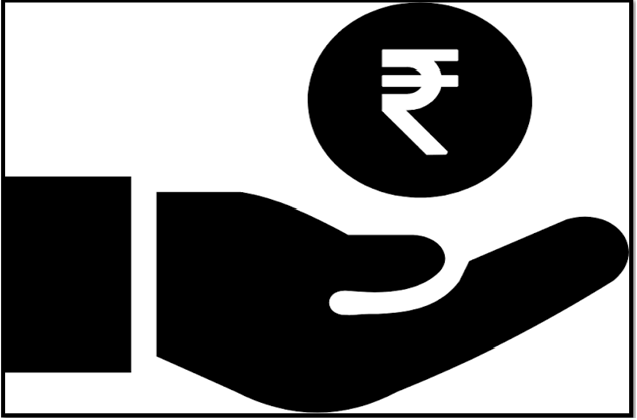THE UNION GOVERNMENT’S CONTROL ON FINANCIAL TRANSFERS TO STATES
Relevance:
- GS 2: Functions and responsibilities of the Union and the States, issues related to the federal structure, devolution of powers and finances to local levels, and cooperative
- GS 3: Economic Development Government Budgeting, and issues related to resource mobilisation, taxation, and federal finance.
Why in the News?
Recently, Tamil Nadu Chief Minister M.K. Stalin accused the Union government of withholding funds for the State’s Metro rail project and other essential projects. This article examines how government tax policies influence financial transfers to States, impacting cooperative federalism.
source:The Hindu
Decline in State Revenues:
- Decline in Net Tax Revenue Share: States’ portion of gross revenue has diminished due to adjustments in net tax revenue
- This calculation deducts revenue from cess and surcharge, collections from Union Territories, and tax administration expenses.
- Despite the Union government’s gross tax revenue soaring from ₹14.6 lakh crore in 2015-16 to ₹27.1 lakh crore in 2021-22, States’ share only rose from ₹5.1 lakh crore to ₹10.2 lakh
- Essentially, while the Union government’s revenue doubled, States’ share did not keep pace.
- Impact on States: This decrease in revenue share hinders States’ capacity to finance projects and manage budgets effectively. States require more funds for infrastructure, healthcare, education, and other public
Increased Discretionary Spending:
- Expansion of Discretionary Fiscal Scope: Current fiscal arrangements have bolstered the Union government’s control over discretionary This has led to an uneven distribution of financial resources among States.
- Examples include centrally sponsored schemes, where the Union government allocates funds directly to
- Centrally Sponsored Schemes (CSS): CSS allocations have risen, augmenting Union government control over State finances. While these schemes aim to ensure uniform development across India, they often impose conditions that curtail States’ financial
Basis of Finance Commission Allocations:
The Finance Commission allocates funds based on factors like income, population, area, forests and ecology, and demographic performance.
- Formula: The 15th Finance Commission uses a specific formula to allocate each State’s share of the divisible tax pool (41%).
- Changes Over Time: Different Finance Commissions may vary the weightage given to each factor, resulting in fluctuations in funds received by
Scope for Anti-Federal Fiscal Policies:
- Central Sector Schemes (CSS):
- The Union government now dedicates a larger share of its finances to CSS. For instance, ₹2.04 lakh crore was allocated in 2021-22, with ₹7.64 lakh crore disbursed through CSS funds.
- This upsurge in CSS funding reduces States’ fiscal autonomy and intensifies reliance on the Union
- Additionally, non-CSS grants totaling ₹1.29 lakh crore in 2021-22 further diminish State.
- Impact on State Autonomy: Growing dependence on CSS and non-CSS grants restricts States’ ability to implement region- specific policies, hampering innovation and responsiveness to local needs.
Future Fiscal Challenges:
- Uneven Revenue Distribution: The Union government’s heightened revenue collection share coupled with reduced transfers to States creates fiscal This limits States’ capacity to fund crucial services such as healthcare and education, enhancing dependency on the Union.
- Fiscal Strain on States: States confront mounting fiscal pressures as they strive to meet escalating population demands with limited resources. Revenue distribution disparities exacerbate these challenges, impeding sustainable development.
Recommendations for Balanced Resource Allocation:
- Objective Allocation Mechanisms: Establish transparent mechanisms for fund distribution based on State needs and performance, with regular monitoring for
- Enhanced Decentralisation: Boost States’ financial independence by reducing Union government control over State.
- Strengthening Frameworks: Adhere to Finance Commission recommendations for fair and transparent fund.
- National-Level Deliberations: Engage all stakeholders in inclusive discussions to determine national priorities requiring central involvement, leaving localised projects to State.
- CSS Flexibility: Introduce flexibility in CSS to allow States to adapt schemes to local needs, addressing regional disparities
- Improved Fiscal Responsibility: Encourage States to adopt sound fiscal management practices to optimise fund use and minimise waste through capacity-building and best practices sharing.
|
Conclusion:
The Union government’s increasing influence over financial transfers to States raises concerns about fiscal federalism and equitable resource distribution. While enhancing Union control over discretionary spending facilitates better management of national projects, it curtails States’ fiscal autonomy. Continuation of this trend risks undermining the cooperative federalism crucial to India’s federal structure. Ensuring equitable and balanced resource distribution is vital for the nation’s overall development. By implementing the suggested measures, both Union and State governments can collaborate more effectively, fostering inclusive growth and development.
|
Mains Practice Question:
Discuss the impact of Union government control over financial transfers on State fiscal autonomy and its effect on cooperative federalism in India. (250 words)
Source:The Indian Express




